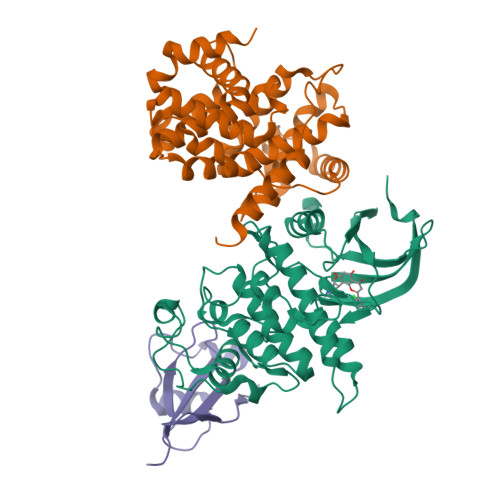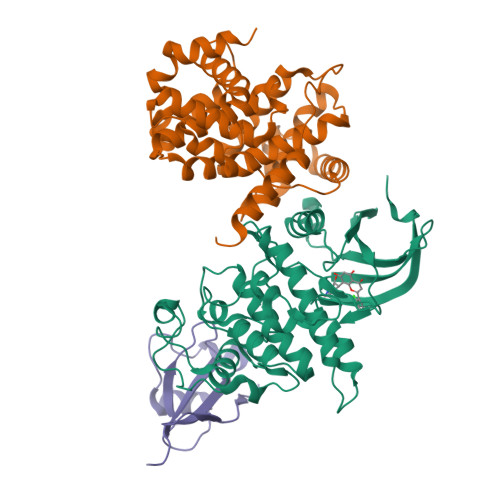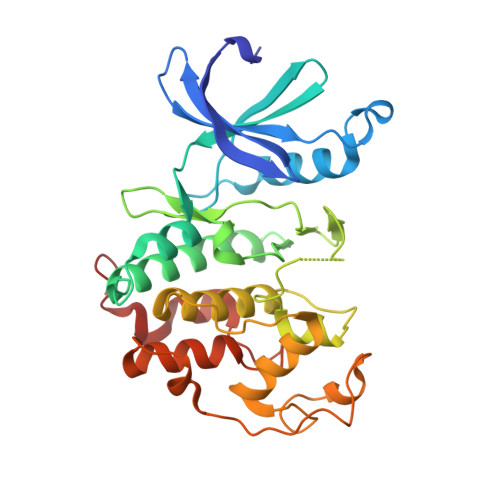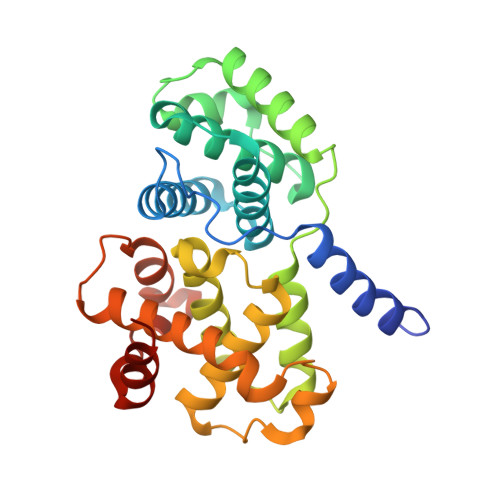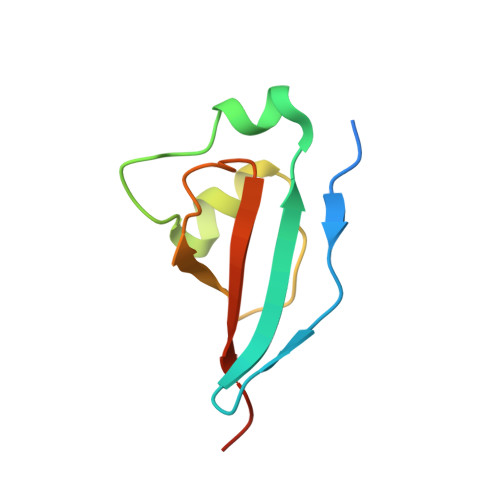Differences in the Conformational Energy Landscape of CDK1 and CDK2 Suggest a Mechanism for Achieving Selective CDK Inhibition.
Wood, D.J., Korolchuk, S., Tatum, N.J., Wang, L.Z., Endicott, J.A., Noble, M.E.M., Martin, M.P.(2019) Cell Chem Biol 26: 121-130.e5
- PubMed: 30472117
- DOI: https://doi.org/10.1016/j.chembiol.2018.10.015
- Primary Citation of Related Structures:
6GU2, 6GU3, 6GU4, 6GU6, 6GU7, 6GUB, 6GUC, 6GUE, 6GUF, 6GUH, 6GUK - PubMed Abstract:
Dysregulation of the cell cycle characterizes many cancer subtypes, providing a rationale for developing cyclin-dependent kinase (CDK) inhibitors. Potent CDK2 inhibitors might target certain cancers in which CCNE1 is amplified. However, current CDK2 inhibitors also inhibit CDK1, generating a toxicity liability. We have used biophysical measurements and X-ray crystallography to investigate the ATP-competitive inhibitor binding properties of cyclin-free and cyclin-bound CDK1 and CDK2. We show that these kinases can readily be distinguished by such inhibitors when cyclin-free, but not when cyclin-bound. The basis for this discrimination is unclear from either inspection or molecular dynamics simulation of ligand-bound CDKs, but is reflected in the contacts made between the kinase N- and C-lobes. We conclude that there is a subtle but profound difference between the conformational energy landscapes of cyclin-free CDK1 and CDK2. The unusual properties of CDK1 might be exploited to differentiate CDK1 from other CDKs in future cancer therapeutic design.
Organizational Affiliation:
Newcastle Cancer Centre, Northern Institute for Cancer Research, Medical School, Newcastle University, Paul O'Gorman Building, Framlington Place, Newcastle upon Tyne NE2 4HH, UK.








